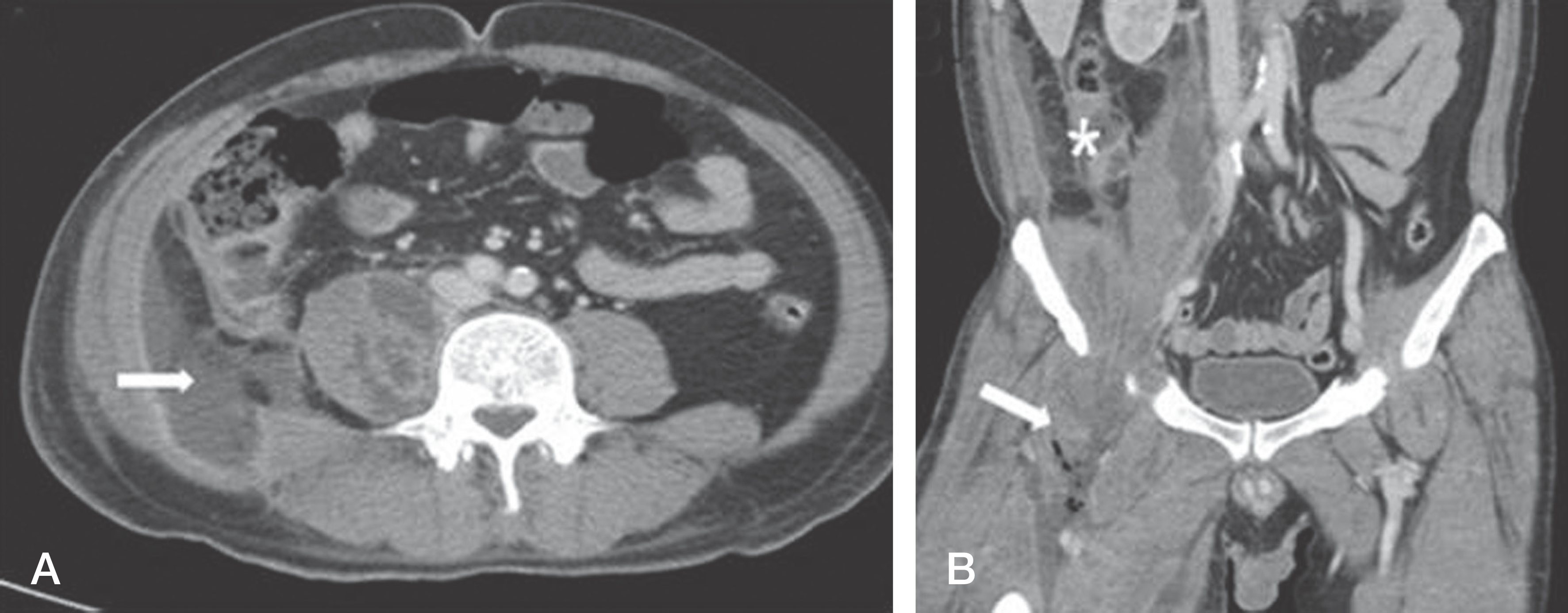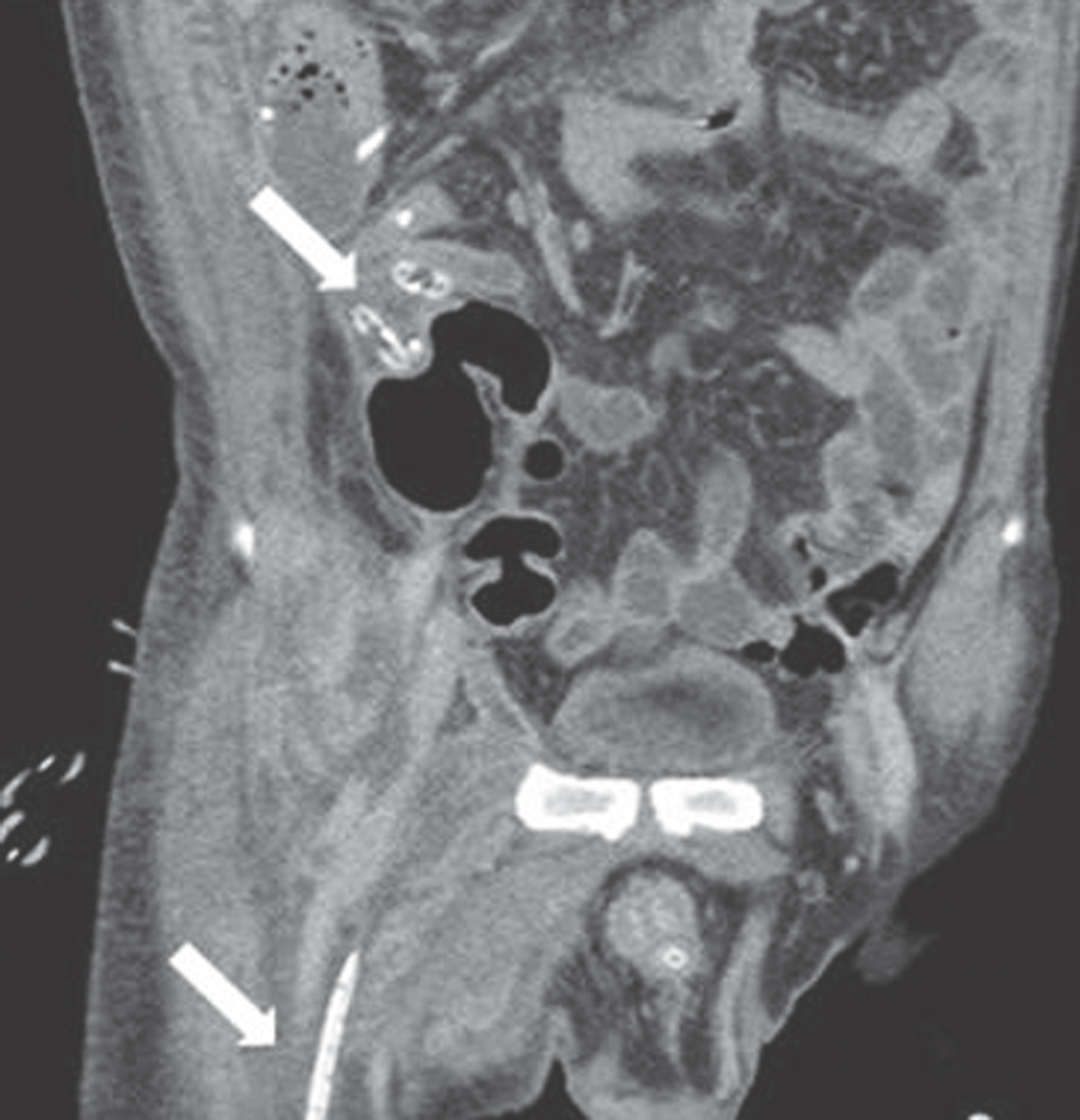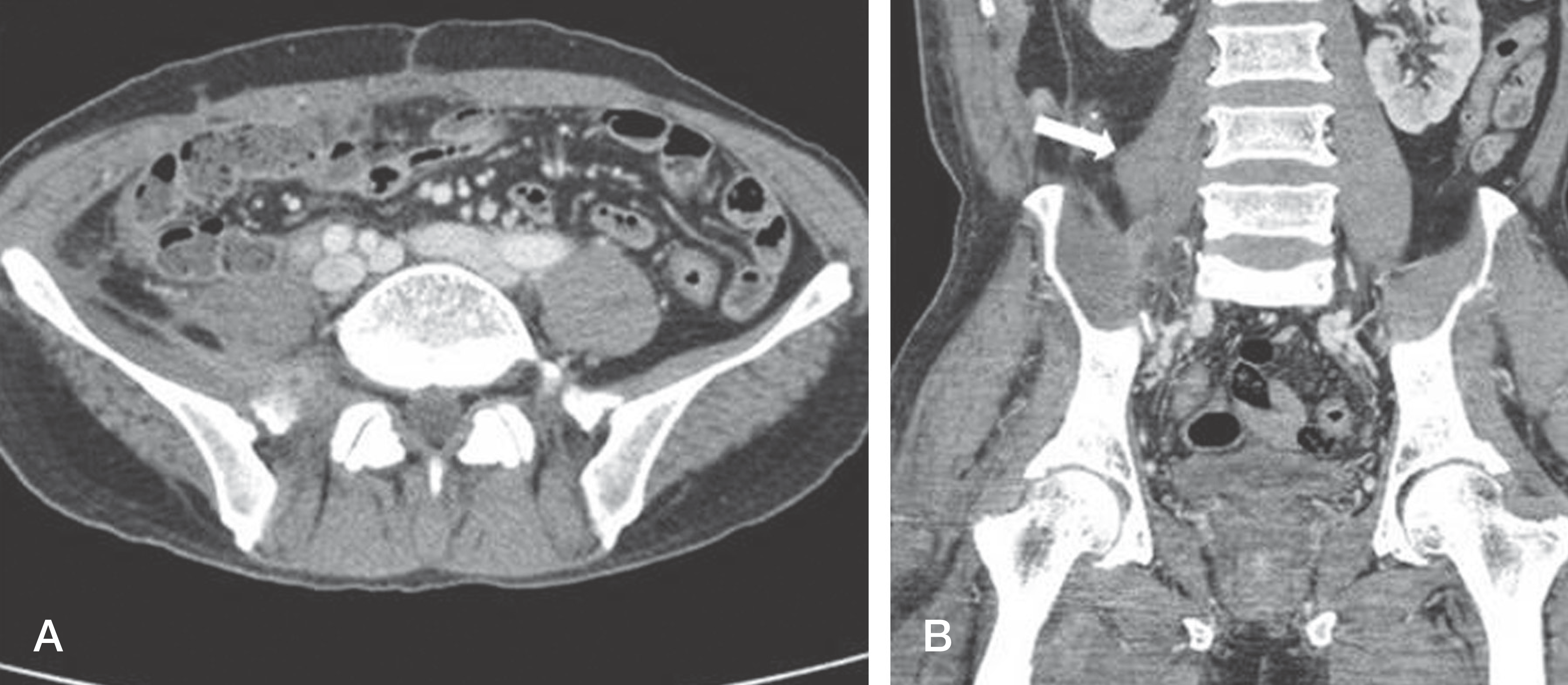Abstract
Summary of Literature Review
The symptoms of psoas abscess are fever, low back pain, and spasm of the psoas muscle.
Materials and Methods
A 53- year old male patient visited the complaining of fever, low back pain and thigh pain. Imaging studies revealed psoas abscess and thigh abscess, accompanied by ruptured appendicitis. Therefore, surgical treatment with percutaneous drainage was performed.
Conclusion
It is necessary to identify the cause of the infection using physical examination as well as abdominal and pelvis computed tomography when a patient has fever, psoas abscess and thigh abscess. It is also important to be aware that the cause of psoas abscess may also be gastrointestinal tract disease with non specific symptoms.
REFERENCES
1. Thongngarm T, McMurray RW. Primary psoa abscess. Ann Rheum Dis. 2001; 60:173–4.
2. Haiart DC, Stevenson P, Hartley RC. Leg pain: an uncom-mon presentation of perforated diverticular disease. J R Coll Surg Edinb. 1989; 34:17–20.
3. Haaga RJ, Alfidi RJ, Cooperman AM, et al. Definitive treatment of a large pyogenic liver abscess with CT guidance. Cleve Clin Q. 1976; 43:85–8.

4. Kim S, Lim HK, Lee JY, Lee J, Kim MJ, Lee AS. Ascending retrocecal appendicitis: clinical and computed tomographic findings. J Comput Assist Tomogr. 2006; 30:772–6.
5. Taiwo B. Psoas abscess: a primer for the internist. South Med J. 2001; 94:2–5.
6. An KC, Kim CW, Min YK. Clinical Availability, Diagnosis and Treatment of the Primary Psoas Muscle Abscess. J Korean Soc Spine Surg. 2010; 17:191–7.

Fig. 1.
(A) Axial contrast-enhanced CT scan shows multiple septated abscess in the right psoas muscle larger than left sided, and appendicitis, with leakage between the appendix and retroperotoneal fluid collection.(white arrow) (B) Reconstructed coronal contrast-enhanced CT scan shows dissection of the abscesses in the right thigh via the femoral canal, and shows gas containing abscesses in the right thigh.(white arrow) and heterogenous hypodense lesion with enhanced peripheral rim around appendix (asetrisk).





 PDF
PDF ePub
ePub Citation
Citation Print
Print




 XML Download
XML Download